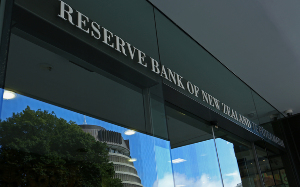
While there might well be a cut, Westpac says it will probably be the bottom of the easing cycle and after that is less clear.
The Australian-owned bank says inflation will remain elevated through the next six months, but with spare capacity in the economy, there is a reasonable expectation that it will ease in next year.
Economic growth will trend higher later this year as the full effects of interest rate reductions ripple through the economy.
However, conditions are likely to remain uneven across the country. Stronger export returns mean that rural regions, especially those with large dairying sectors, are seeing strong growth in incomes and spending. Urban regions will be slower to improve.
“The speed and strength of the economic recovery will determine whether further OCR cuts are needed,” Kelly Eckhold, Westpac chief economist says.
Kiwibank’s economics team says adding to an already tall pile of evidence the economy needs stimulus, is unemployment at a five-year high. And, it would have been higher if not for the steeper-than-expected slide in the participation rate. Meanwhile, details under the headline rate portray an even weaker reality, they say.
However, inflation expectations remain comfortably within the RBNZ’s 1-3% target band. “The RBNZ should feel comfortable looking through the recent near-term inflation rise from 2.5% to 2.7%, particularly as its latest survey of inflation expectations showed the two year ahead horizon comfortably contained within its target band,” Sabrina Delgado, Kiwibank economist says.
Households improving gradually
Meanwhile Westpac says while the pass through of interest rate cuts has been gradual to date, they will provide a sizeable boost to demand over the next six to 12 months.”
In its August Economic Overview, the bank says households – especially those with mortgages that are refinancing – should see their financial situation improve over the next year. It estimates that almost half of the expected impact of the past year’s OCR easing is yet to pass through to households. The other half of all mortgages will come up for repricing over the next six months.
Not all of the fall in borrowing costs will be spent; some will be saved and some households will pay down their mortgages faster.
Even so, lower borrowing costs will help to boost spending over the coming year. But for a while, conditions will remain challenging for some households given the downturn in the labour market.
The weak labour market has likely leaned against the impact of lower interest rates to some extent, the report says.




Comments
No comments yet.
Sign In to add your comment